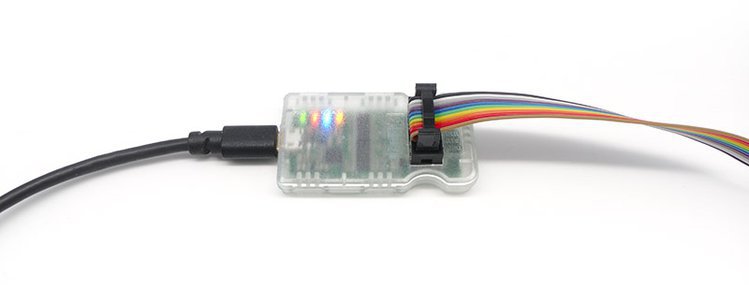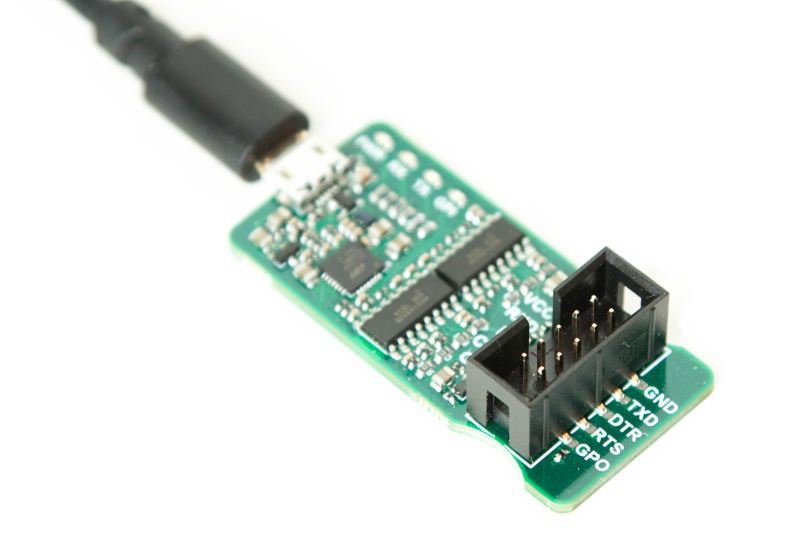Project update 11 of 21
Frequently Asked Questions
Hiya!
The campaign’s end is nearing with only 9 days left, so I assembled a list of questions that I often get via forums and e-mails regarding the μArt. It is a good source of concentrated information, and it clears up some things further. So here you go, the top frequently asked questions. By the way, you might also want to read to the end if you’re visiting Photokina 2018.
Is there a datasheet or a schematic drawing available?
Yes, both are published on the project’s website over at uart-adapter.com.
What is the minimum number of UART-connections for correct operation?
Four. You need to connect VIN, GND, TXD and RXD. VIN powers the UART-side of the adapter, and allows it to automatically use the correct voltage level for your peer circuit. Connect VIN to the IO supply voltage on your other board.
What if I have only a three-pin UART header on my other board?
Not a problem, you can connect VIN of the adapter to any other voltage header on your board as long as it matches the IO voltage level of your UART pins. In the very rare case you do not have a suitable voltage header, you can also supply VIN externally (for example from a lab supply), provided the supply voltage matches your IO voltage and you connect all grounds together.
What are the key ICs in the μArt?
The galvanic isolation is provided by two pieces of MAX14932BASE+ by Maxim Integrated, while a FT231X by FTDI is responsible for the USB-to-UART protocol conversion. Originally this latter used to be a Silicon Labs part, but I had to replace it due to its quality issues.
Can I use the μArt to power my boards from USB?
No. The galvanic isolation makes it very unpractical. Even if implemented, it would have been very limited as it would only provide a fraction of the total USB power, yet it would have cost a lot and would have increased physical size considerably too.
What insulation does the μArt provide?
The highest voltage level the built-in galvanic isolation can withstand depends on the duration of the high-voltage event. For up to 443 Vrms there is no time limit, and for events shorter than 60 seconds it is 2750 Vrms. In other words, the isolation in the μArt will withstand mains voltages with double safety margin, and surge events an order of magnitude higher too.
Can I use the μArt for RS-232 / RS-485?
Not directly. The μArt is a TTL-UART device, but if you wish you can supplement it with an external voltage converter and digital inverter to get RS-232. For RS-485, the μArt provides a TXDEN output, allowing you to connect it directly to a bidirectional differential transciever.
How many GPIOs are available?
There is one general-purpose input and one general-purpose output pin you can use at any time during (in parallel with) UART communication. Using the libftdi library, you can also repurpose the UART pins which will give you 3+3 GPIOs in total, in this case though you obviously won’t be able to use the GPIOs and the UART in parallel.
How can I use the GPIOs in the μArt?
Starting from Linux kernel version 4.20 (probably, driver submitted but review still pending at the time of writing), you can use the standard sysfs interface for GPIOs, like for most single-board computers. Here is one of the many tutorials on the internet showing the usage of this interface. For earlier kernels, use the libftdi library. You also need the latter library irrespective of the kernel version if you want to implement real-time protocols over the GPIO.
Is the squid-cable in the cable bundle labeled?
Yes. The far ends of each wire in the cable are labeled with the corresponding μArt-header pin function.
What operating systems will the μArt work on?
Any OS with drivers for the FTDI FT231X chip will work. Windows, Linux, and MacOS, among some more, will work perfectly for the serial converter, though I can guarantee GPIO support only on Windows and Linux.
Is the μArt OSHW-certified?
It is not. While I do publish schematics so that you can copy and build your own device or modify it to suit your own needs, this isn’t enough for OSHW certification, as you have to do the layout yourself.
Is the μArt CE/FCC-certified?
Yes, proper tests have been conducted by an independent and professional laboratory, and both CE and FCC compliance have been demonstrated.
Is the μArt going to be available after funding has ended?
Yes, though the retail-price will be higher, and I cannot guarantee it will always be in stock, especially in the first 6 months or so.
When will I get my μArt?
Backer units are planned to ship on November 15. This is the date by which I plan to send the finished units away to you, not the date it will arrive at your address. For the latter, you have to add an additional 1-3 weeks, which is the time it usually takes for international carriers to deliver goods to their destination. If you have selected "Registered shipping" when backing the project, you’ll get your own tracking number which will allow you to track the delivery of your own unit and ask for information at the carriers in case of delays.
I would like to modify my pledge, can I?
No problem. You can modify any aspect of your pledge (e.g. delete, change quantity, and so on) at any time while the campaign is still running. However, only Crowd Supply can make those modifications for you, so please contact them directly regarding such matters.
Photokina 2018
Not really part of the FAQ, but I also wanted to mention I’ll be at Photokina on 28. September next week in Cologne. I’ll bring a couple of giveaway μArt prototypes - working and functional of course - with me. In case you’re also visiting, let me know via the "Ask a Question" button on the campaign page if you want to meet up ;).
Closing words
The above FAQ should answer a lot of questions by a lot of people. For even more information, check out the other project updates if you haven’t yet. They contain lots of information about various aspects of the project, including technical information, design considerations, links to external articles, and details on and advantages of various product features. Of course, you can always send me more questions using the "Ask a Question" button button. We still have a little more than a week to go, and in that time, let’s reach for $20K!

